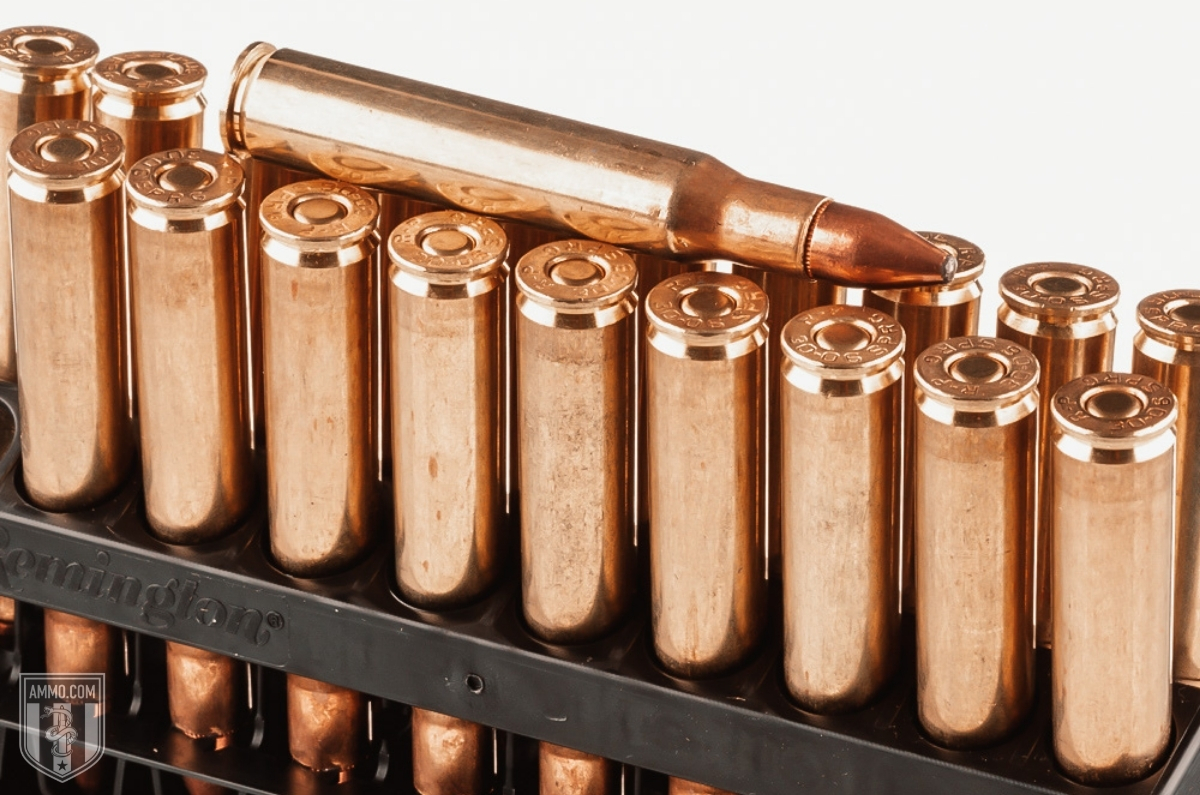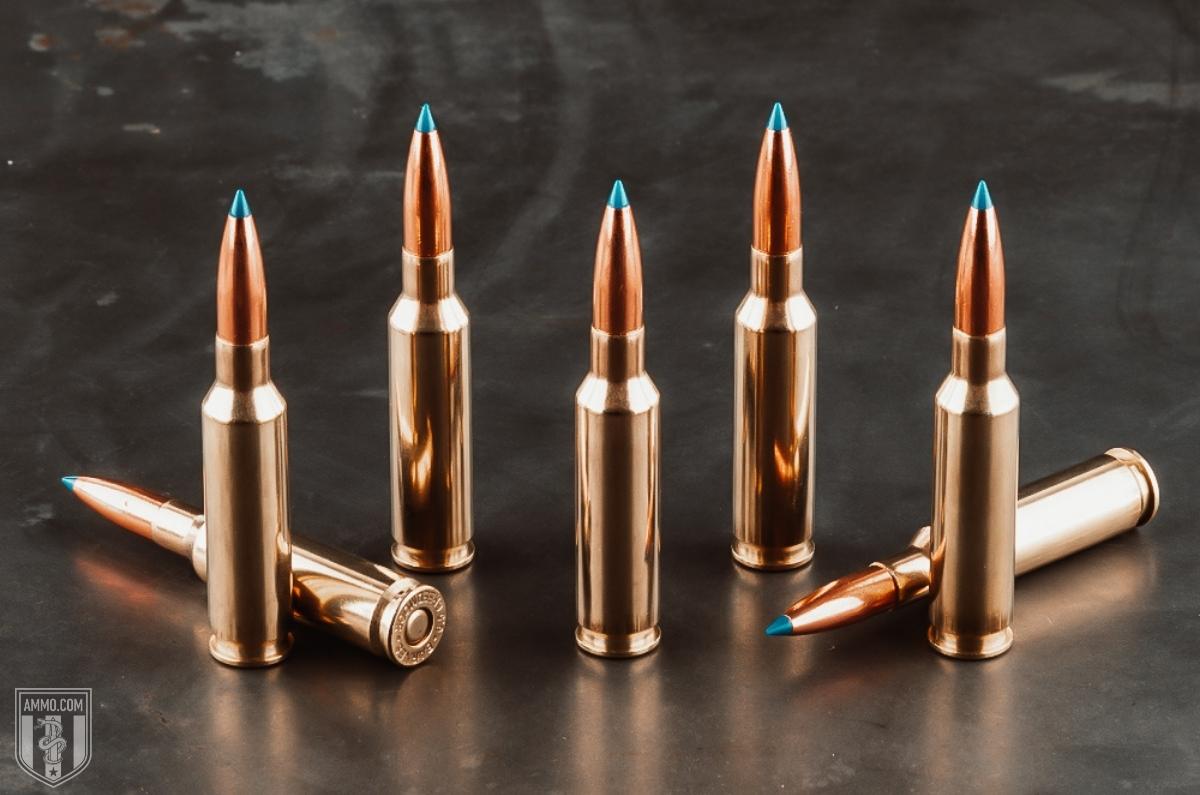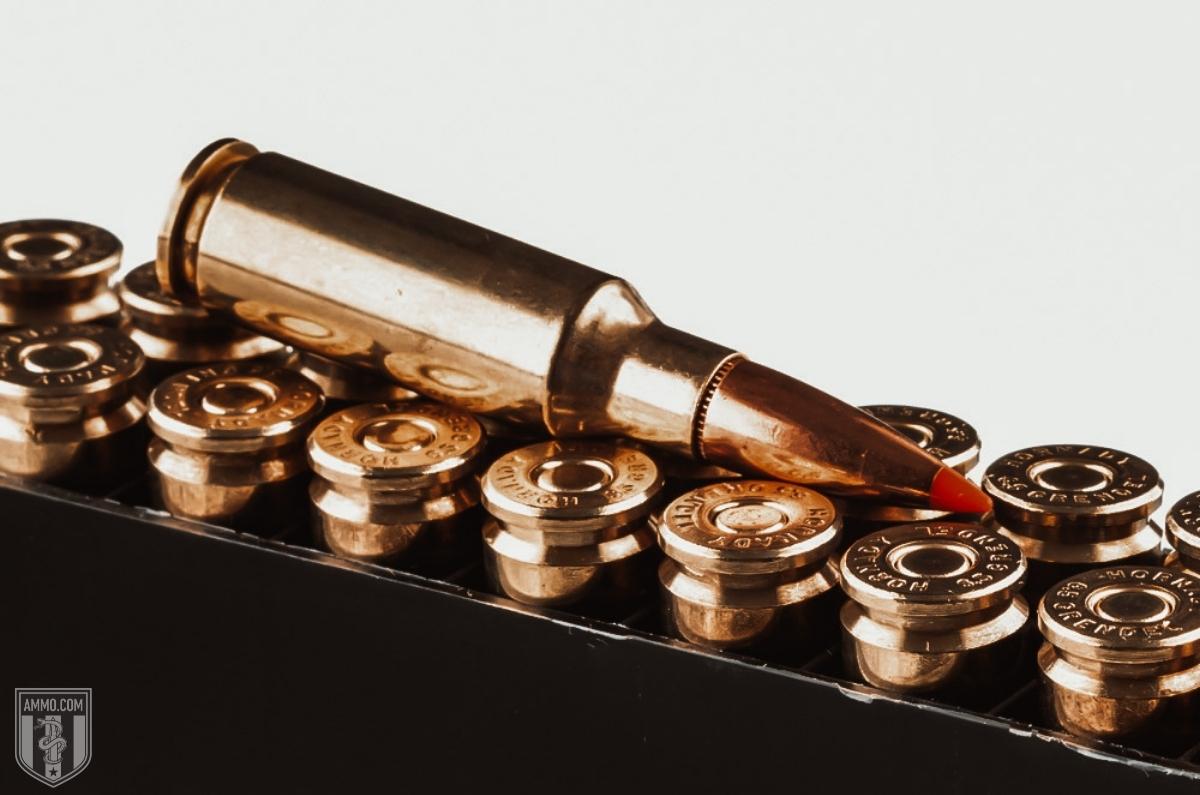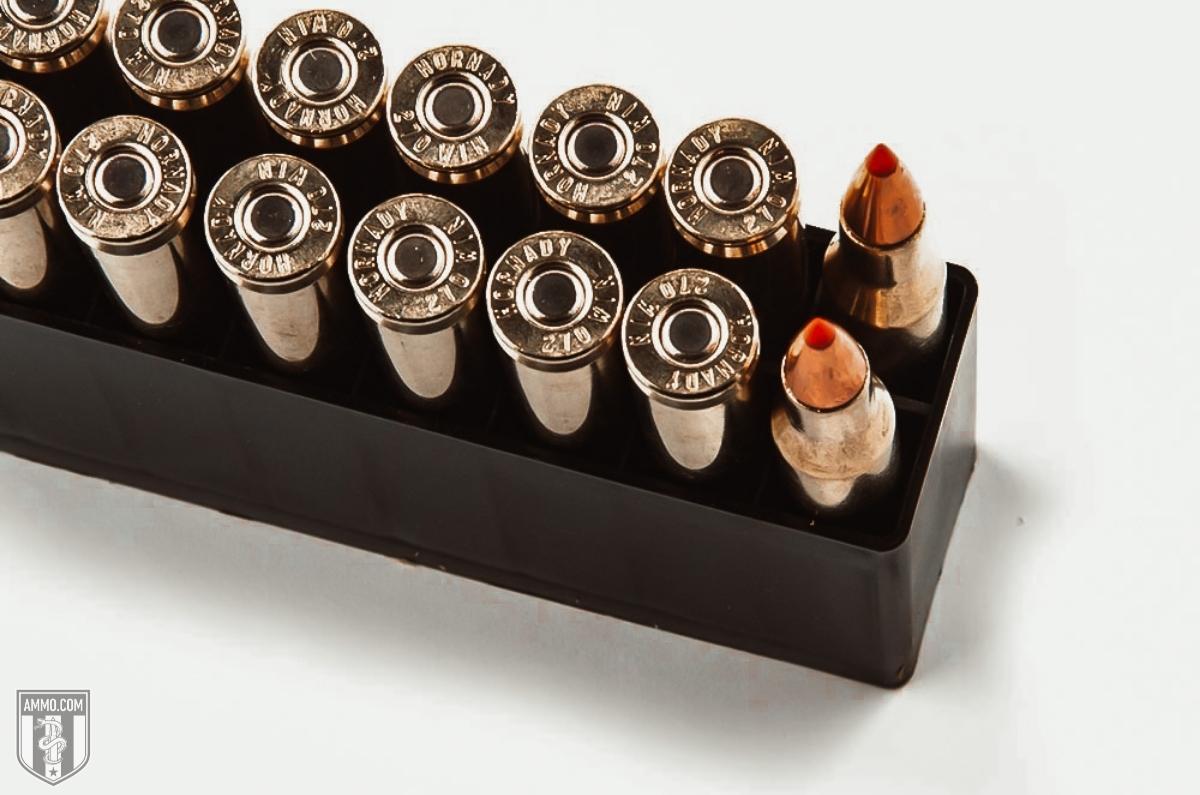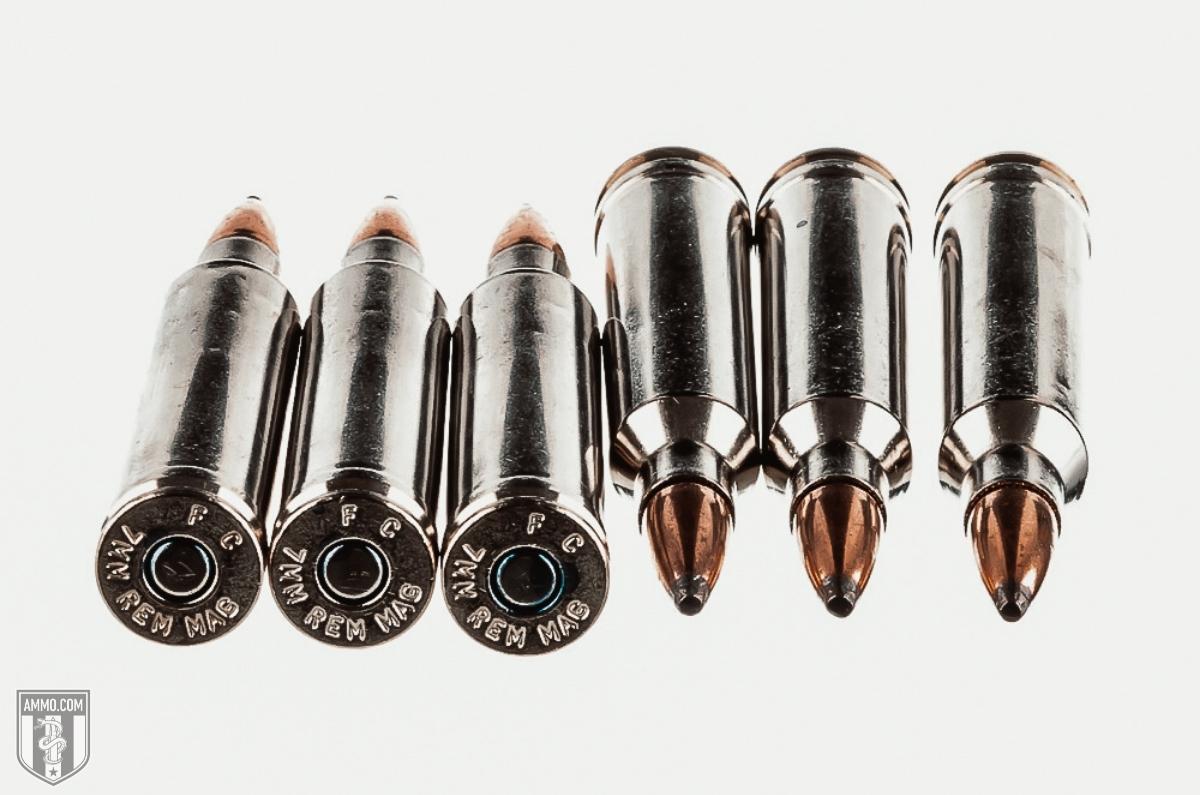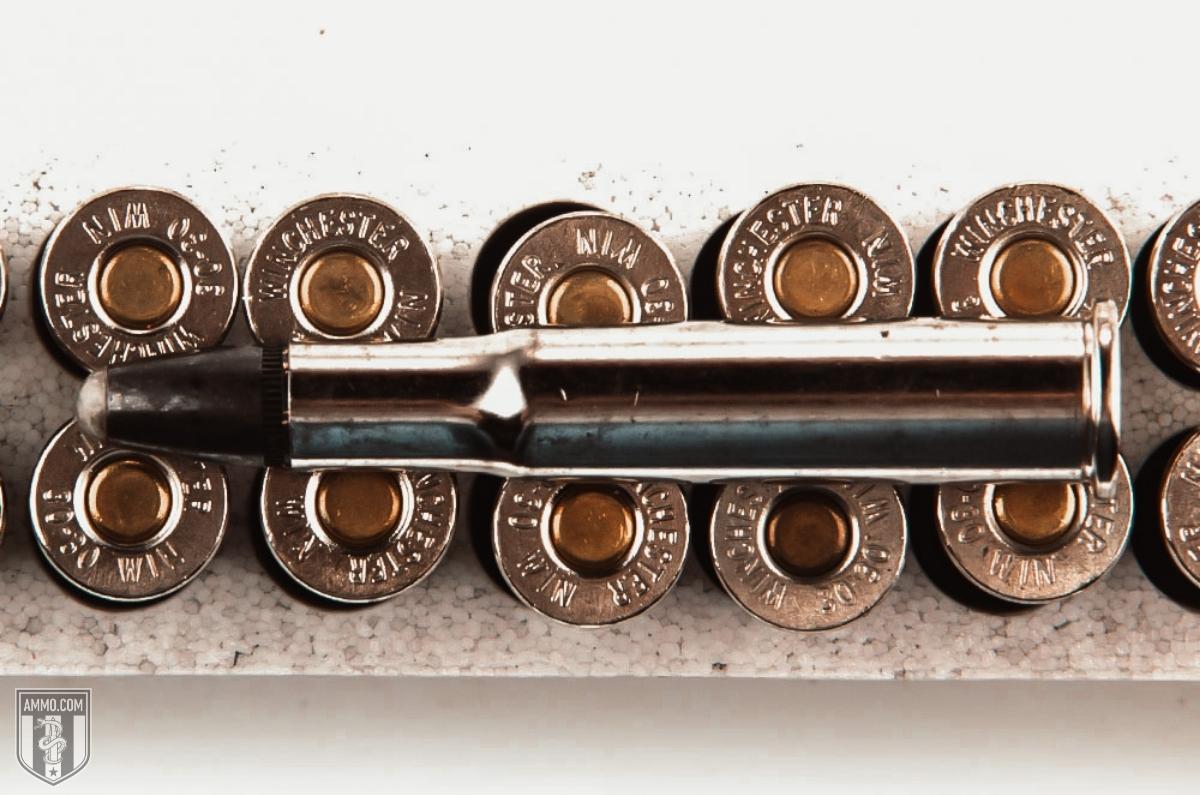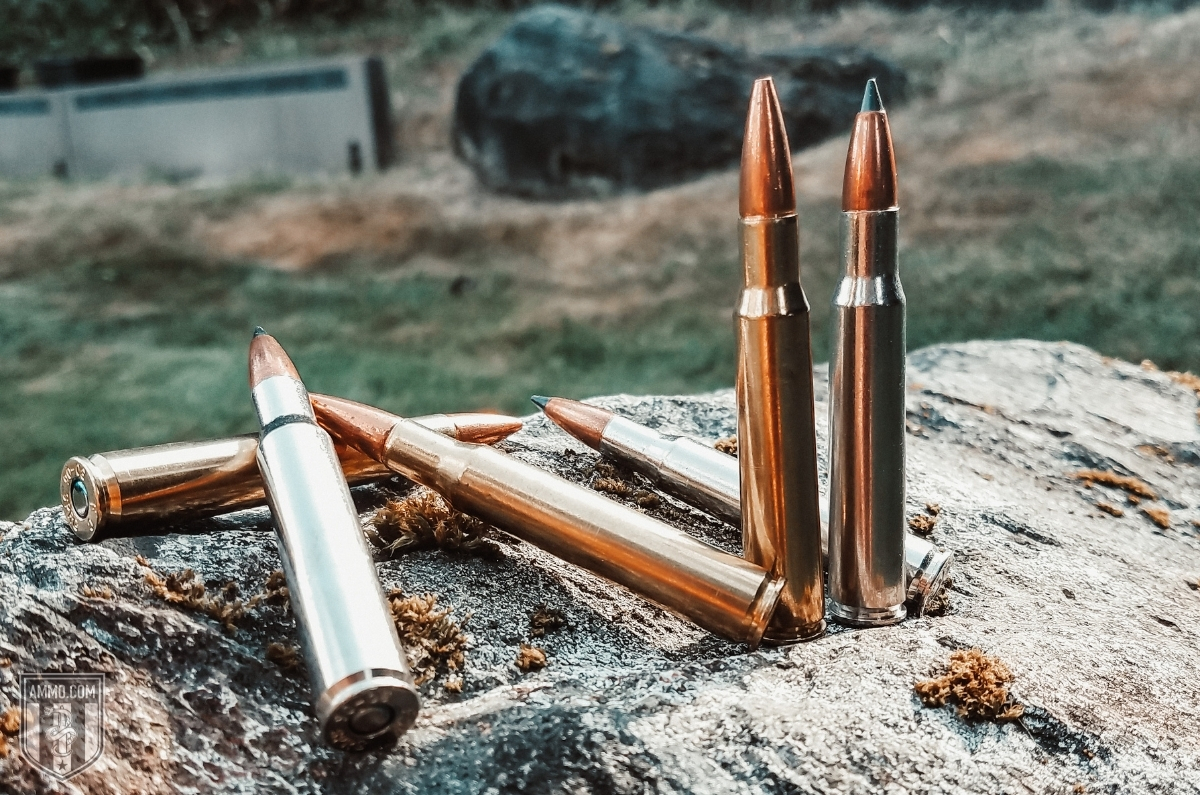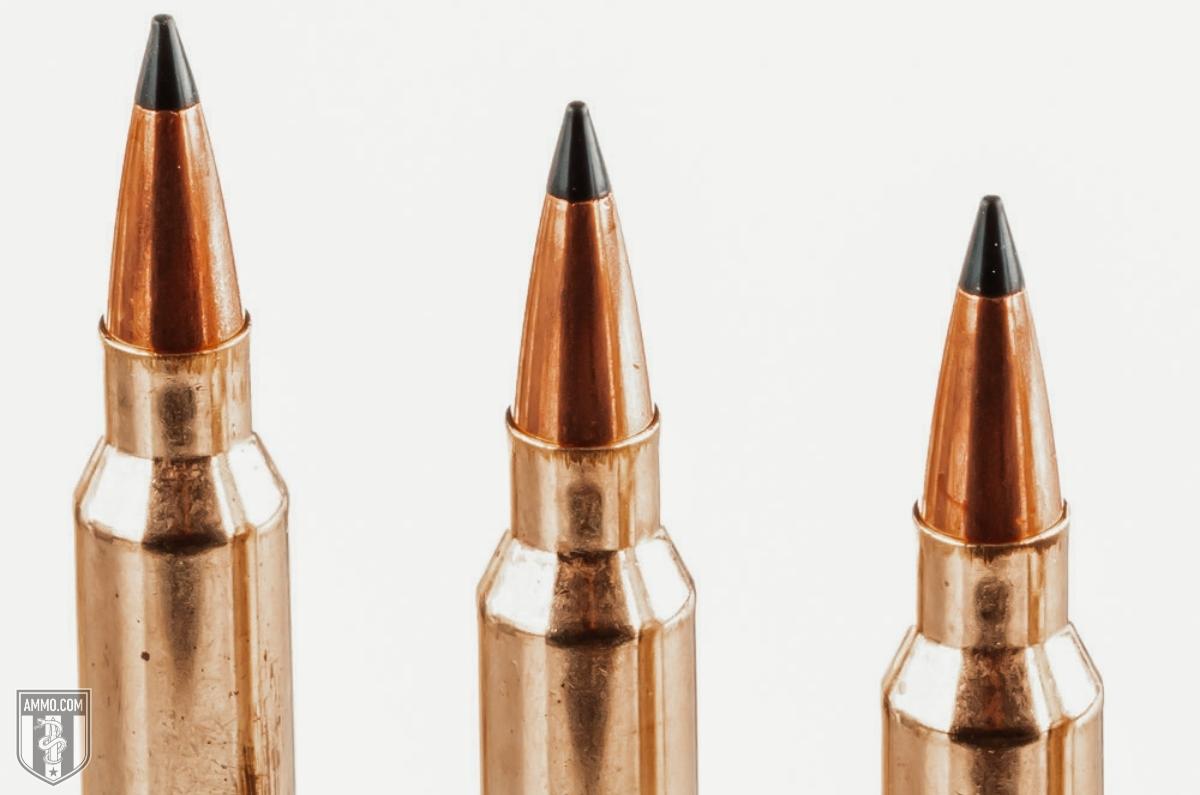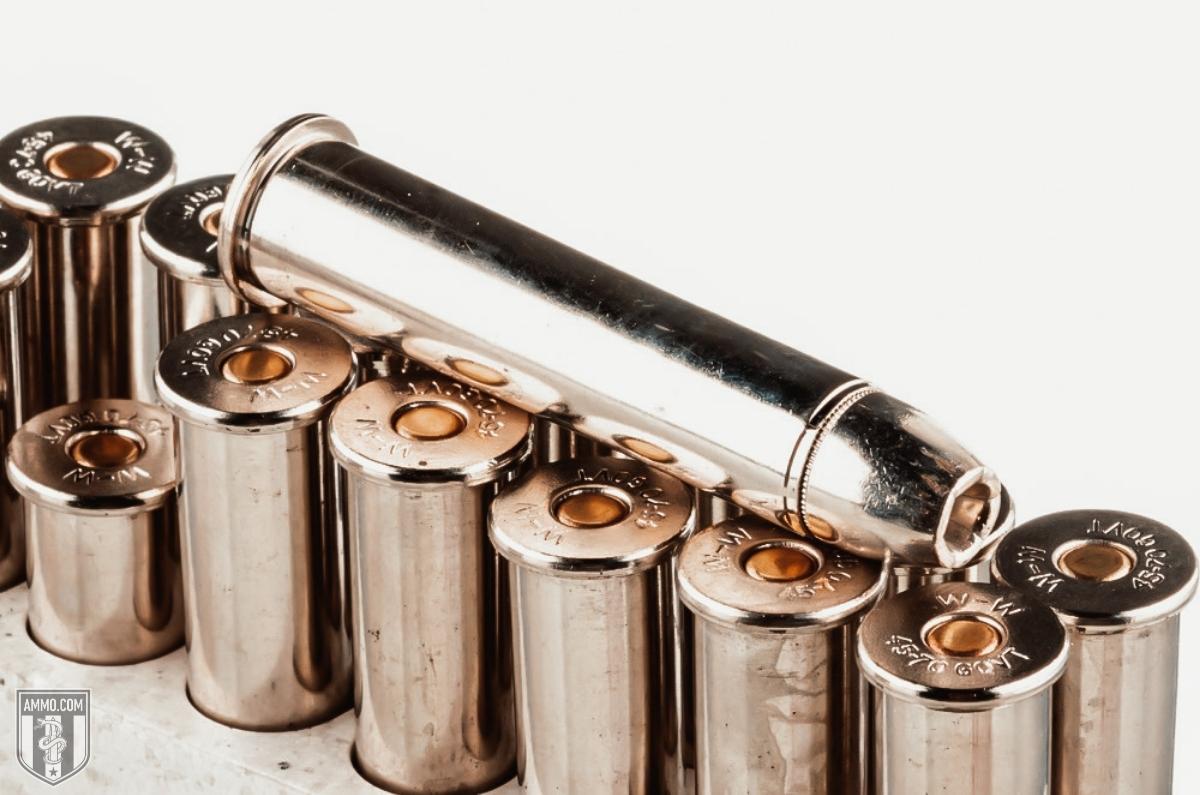Best Caliber for Deer Hunting: Settling the Whitetail Cartridge Debate
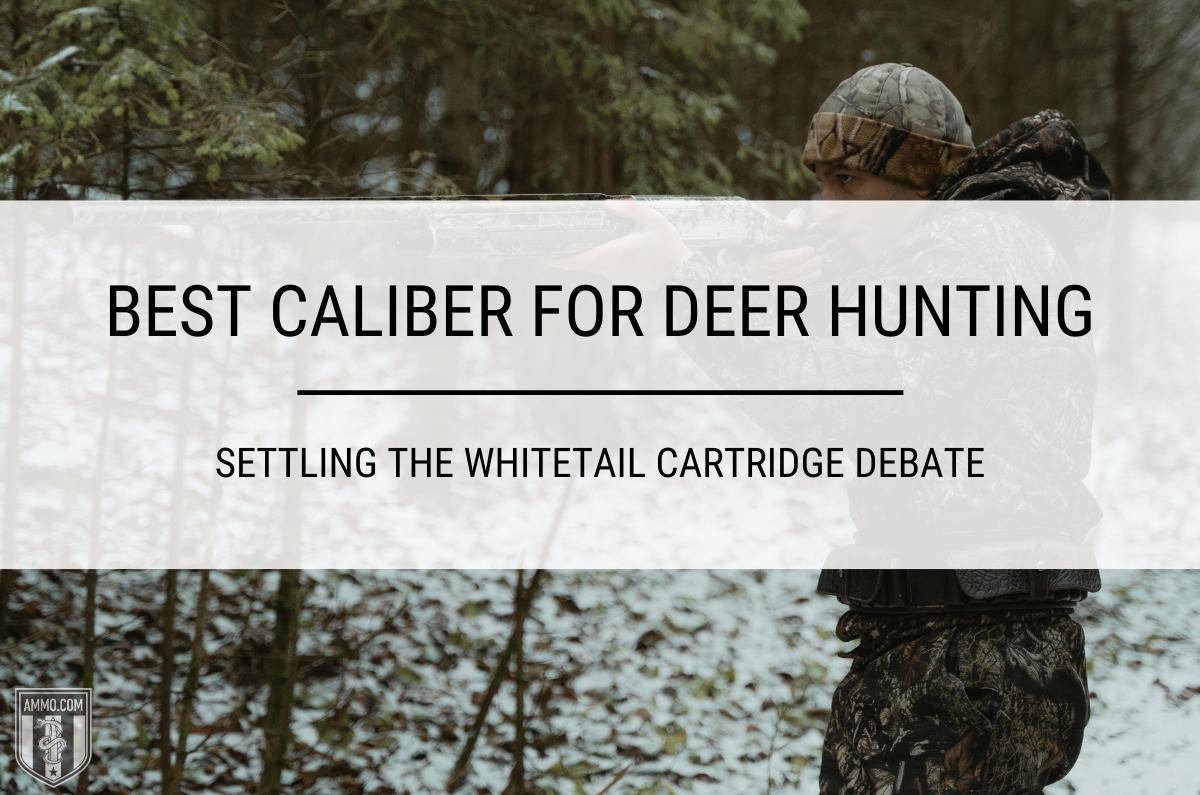
The topic of deer hunting calibers has been hotly debated around tailgates, campfires, and skinning sheds for more than a century. Because there are about as many opinions as there are deer hunters, narrowing down the options to make a “best cartridge for deer” list was no easy task.
Whitetail deer live in diverse habitats. Whitetail deer hunters also use diverse hunting tactics. Rifle cartridges that work well from a big woods treestand aren’t going to cut for a hunter sniping shots across acres of harvested corn.
We tried to include something for every type of deer hunting, from spot-and-stalk to long sits in a box blind. The cartridges on this list are the rock stars of American deer hunting.
What is the Best Deer Hunting Cartridge?
Quick Note:
Although some shooters use the terms “caliber” and “cartridge” interchangeably, the words refer to vastly different things.
“Caliber” is literally the diameter of a projectile (or the barrel of a firearm that the projectile travels through), and is generally measured in fractions of an inch. The word “cartridge” refers to an entire unit of ammunition - bullet, casing, powder, and primer.
In this article, we'll be discussing the best cartridge for hunting deer.
.308 Winchester: Best All-Around Whitetail Deer Cartridge
Although it’s impossible to crown a single cartridge as king of the deer droppers, this cartridge comes awfully close. We have a long list of reasons we love the .308 Winchester for deer hunting.
This .30-caliber cartridge works well in a variety of hunting conditions, from up close and personal to long-range deer dropping. It has better-than-average ballistics, relatively light recoil, and you can buy 308 in bulk to save some money.
There are also a ton of big game-specific loads on the market today. Modern .308 Winchester ammo features classic soft point, ballistic tip, monolithic, bonded bullets, and more.
.308 loads also feature projectiles in a wide range of weight classes, from lightweight options to deep-driving heavy bullet weights.
The .308 Win offers perhaps the best rifle selection on the market today. There are literally hundreds of hunting rifles chambered for this popular deer cartridge being rolled off assembly lines every day. Hunters can choose from traditional bolt-action rifles to semi-auto AR-10 modern sporting rifles. The possibilities are nearly endless.
If you need to shoot at longer ranges, the .308 Winchester has a well-earned reputation for precision. I’ve also seen this cartridge drop deer at 40 yards in thick woods without breaking a sweat. When it comes to slaying whitetails, the .308 Win is as close as it gets to a jack-of-all-trades.
.243 Winchester
Many serious, life-long deer hunters were introduced to the sport with a rifle chambered in .243 Winchester. While the .243 is a mild-shooting cartridge perfect for small shooters, this cartridge shouldn’t be limited to young hunters. Its mild recoil certainly makes the .243 an attractive option for women and young hunters. However, this cartridge has plenty to offer deer hunters of every shape, size, and experience level.
Some states require hunters to use cartridges with a minimum bullet diameter of .243 inches. Although the .243 is on the low end of the caliber spectrum, it shouldn’t lose respect as a deer cartridge. While critics often claim it “isn’t enough gun” for whitetails, the number of deer that have fallen to this cartridge proves otherwise.
The .243 Win pushes relatively lightweight bullets with a muzzle velocity that exceeds 3000 fps. That speed produces a flat trajectory and helps projectiles buck the wind, both of which enhance this cartridge’s long-range precision.
The .243 Win is also a highly versatile cartridge. If you need to shoot antelope, wild hogs, coyotes, or varmints in addition to whitetails, this little cartridge has the capacity to get the job done.
Modern advancements in bullet technology have certainly helped level the playing field for small caliber cartridges like the .243 Win. However, you’ll still want to pick a load with controlled expansion projectiles.
You should also choose your shots carefully. Lightweight, narrow bullets don’t do a great job of punching through bone. Also, because the .243 has the narrowest bullet diameter of any cartridge on our list, shot placement is crucial.
6.5 Creedmoor
Although the 6.5 Creedmoor was originally designed for precision rifle series target competition, it has gained a die-hard following in the hunting world.
Introduced in 2007, it is still a relative newcomer to the cartridge world. However, its pancake-flat trajectory, ultra-mild recoil, and reliable accuracy have quickly earned this cartridge superstar status among target shooters and deer hunters alike.
The long slim profiles of 6.5mm projectiles provide a high ballistic coefficient, especially bullets with heavy-for-caliber grain weights. Heavier bullets also produce deeper driving penetration, which is crucial for reaching vitals, especially when you’re shooting whitetails at longer ranges.
To milk the full long-range capabilities of the 6.5 Creedmoor, choose loads topped with high BC projectiles (.500 or higher). With good marksmanship skills and the right hunting load, there’s no reason you can’t ethically harvest whitetails out to at least 500 yards.
Because of its booming popularity, hunters can easily find hunting rifles chambered in 6.5 Creedmoor from all the major manufacturers, including Browning, Savage, Weatherby, and Ruger. You can even find the iconic Remington Model 700 chambered for this hot rod cartridge.
6.5 Grendel
Although the 6.5 Grendel is nowhere near as popular as its Creedmoor cousin, this one deserves a mention for one very special reason - it is short enough to fit in an AR-15.
If you want to hunt whitetails with an AR-15 rifle, 6.5 Grendel is probably the best way to do it. Although the ballistic performance of the Grendel pales in comparison to the 6.5 Creedmoor, it cranks out far more horsepower than the standard AR-15 cartridge - the .223 Remington.
Like the Creedmoor, the 6.5 Grendel utilizes highly aerodynamic bullets with high sectional density and high BC. These projectiles hold their velocity like there’s no tomorrow and are less affected by wind than most of the big .30s.
While deer hunting with a modern sporting rifle is cool, the 6.5 Grendel has some limitations compared to the Creedmoor. Its shorter case limits its powder capacity. That means these short-action cartridges don’t have as much oomph behind them as the 6.5 Creedmoor. However, a 123-grain pill shot from a Grendel is still toting well over 1000 foot-pounds of energy past 300 yards, which is far better than the average .30-30.
.270 Winchester
The .270 Winchester cartridge was released in 1925 and gained popularity thanks to an endorsement from the famous outdoor writer, Jack O’Connor.
Winchester based the design of their new cartridge on the .30-03 Springfield. They took the .30-03 case and necked it down to take thinner .277-caliber bullets. The result is an effective high-velocity deer cartridge with a flatter trajectory and less recoil than the .30-06 Springfield, which has long been considered the gold standard for deer cartridges.
The .270 Winchester sits in a performance sweet spot between the .308 Win and the .264 Win. This cartridge uses thinner bullets than the big .30s, which means hunters benefit from projectiles with better sectional density which deliver deeper penetration in soft tissue.
Meanwhile, the .270 Win carves wider wound channels than the little .243. Wide, deep penetrating wounds are more effective for humanely harvesting whitetails. That makes the .270 Win a godsend, especially for hunters chasing western whitetails, where shots are often stretched across acres of open plains.
Choose .270 loads with 130- to 140-grain bullets for most whitetail deer hunting. If you want to stretch the capabilities of the .270, or you need your rifle to pull double duty for mule deer and whitetails, opt for a heavier 150-grain pill with a ballistic tip.
7mm Remington Magnum
The 7mm Rem Mag was unveiled in 1962 in conjunction with the now-iconic Remington Model 700 bolt action rifle. Since then, the 7mm Rem Mag has enjoyed incredible popularity, which we take as proof that Americans haven’t completely shirked the metric system.
This flat-shooting cartridge handles heavier bullets than .243 Win, 6.5 Grendel, and most .270 Winchester loads. Not only is this cartridge capable of ringing steel targets at ridiculously long-range, but it is also capable of dropping deer at distances that would have most other cartridges sweating bullets.
The 7mm Rem Mag boasts plenty of long-range knockdown power. It lobs a 162-grain spire point bullet at a blistering 3030 fps with 3302 foot-pounds of muzzle energy. At 500 yards, that bullet is still cruising along at 2219 fps and carrying 1772 foot-pounds of kinetic energy.
If you need to hit deer hard, this cartridge is plenty capable. As an added bonus, it delivers all that hard-hitting performance without delivering a brutal beating to your shoulder.
.30-30 Winchester
Unveiled in 1895 to accompany the new Winchester Model 1894, the .30-30 Winchester is practically synonymous with cowboy lever-action rifles. Although it has been around for more than a century, this old-fashioned cartridge is far from outdated. Plenty of whitetails continue to fall to this iconic cartridge (and the rifles that shoot them) every single deer season.
Although the venerable .30-30 has its limitations, you’ll be hard-pressed to name a more successful deer cartridge. It may be impossible to prove, but many hunters believe the .30-30 has put more venison on more dinner plates than any other cartridge in history.
Delivering modest velocities with kitten-soft recoil, the .30-30 performs best inside of 200 yards. But at close range, this cartridge is an absolute show-stopper.
Because bullets fired from .30-30 rifles aren’t subjected to break-neck speeds, they rarely fail to mushroom. They also retain enough weight to drive deep into soft tissue.
Most .30-30 rifles are also compact carbines. The short, lightweight design allows hunters to quickly swing on a spooked buck jumped from his afternoon bed. This is the gun you want when deer hunting has you trudging through thick woods, marshes, and river bottoms.
Many hunters received their .30-30 deer rifles as hand-me-downs. However, there are still plenty of awesome .30-30 lever guns rolling off the assembly lines, including the Marlin 336 and several offerings from Henry Repeating Arms. With modern production methods, .30-30 lever actions are more reliable than ever.
.30-30 ammo has also benefited from modern technology. While most lever guns are still loaded with traditional soft points, Hornady’s LEVERevolution line of ammo allows you to safely feed ballistic tips in the .30-30’s characteristic tubular magazine. With a more aerodynamic profile, these spire-shaped bullets offer improved in-flight ballistics for more accurate shooting.
.30-06 Springfield
Adopted by the United States Army in 1906, the .30-06 (pronounced “thirty aught six”) is probably the most popular big-game cartridge of all time. Its military background definitely contributed to its fame. Soldiers returning home from both world wars reached for the cartridges and rifles they were most familiar with when they headed into the deer woods.
However, the flames of the aught six’s popularity were certainly fanned by its outstanding performance. It offers relatively flat trajectories and plenty of power. It can even handle angry bruins if they cross your path on the way to your favorite deer stand.
The .30-06 Springfield has recoil to match its deer-dropping power. It can be a bit much for recoil-sensitive shooters, but most seasoned deer hunters consider it manageable.
At this point, the .30-06 has become practically immortal. It continuously ranks as one of the top-selling cartridges for most major ammo manufacturers. There is also no shortage of either hunting rifles or deer-worthy loads on the market today. Most popular rifle manufacturers offer several models chambered in .30-06 and the hunting ammo for them is surprisingly affordable.
.300 Winchester Magnum
Long considered the best caliber for deer hunting, it should come as no surprise that there are several .30-caliber cartridges that made this list. One of the best among them is the .300 Win Mag.
The .300 Win Mag produces ultra-flat trajectories and packs plenty of horsepower downrange. It basically does everything the .30-06 does, but it does them all faster and harder.
With the right load, 300 Win Mag spells doom deer, elk, moose, black bear, feral hogs, and pretty much any other big game animal roaming the North American continent.
Because it’s a 30-caliber cartridge, handloaders have a plethora of bullet designs to choose from. There’s also plenty of factory ammo available.
The .300 Win Mag delivers considerable recoil. It kicks hard enough to put off most shooters, and it definitely doesn’t make for a fun day at the gun range.
Some hunters consider the .300 Win Mag to be “too much gun” for whitetails. However, if you need to stretch your shots out to 500 yards, .300 Win Mag still has enough heat for an ethical kill at that distance.
.45-70 Government
Like the .30-30 Winchester, the .45-70 Government seems like it has been around forever. Introduced in 1873, the .45-70 was designed for lever-action rifles.
The .45-70 Government is also classified as a straight-wall cartridge, making it an ideal option for hunting areas that limit deer hunters to these basic cartridges.
Although early .45-70 loads produced rainbow-like trajectories, modern ammo technology has come a long way in flattening them out. Still, the .45-70 is anything but a flat shooter.
What this cartridge does have in its favor is heavyweight bullets (up to 405 grains, although bullets in the 250- to 300-grain range are far more common) and a good amount of knockdown power.
The heavyweight bullets do a decent job of plowing through whatever might be in their paths - thick shoulder blades, brush, stray branches - which is why .45-70 Government rifles are often used as “brush guns.”
When you’re hunting with a .45-70, you don’t exactly have to wait for a picture-perfect presentation. However, you will want to stick to close-range shots. This cartridge fizzles out quickly once it passes the 200-yard mark.
Despite its hefty caliber, the .45-70s recoil is fairly mellow. Because those thick bullets are traveling at modest velocities, the .45-70 delivers minimal meat damage, which is a bonus if your main goal is to put venison in the freezer.
Final Thoughts
The cartridges that made our list of the best cartridges for deer hunting certainly aren’t the only capable options available to modern deer hunters. When the smoke clears, the deer can’t really tell the difference between a .243 and a .45-70. Ultimately, shooting skill and careful shot placement are the best weapons you can take with you into the deer woods.
However, if you’re looking for a new dedicated deer rifle, any of the options on this list will serve you well.
Cartridge Recommendations
- Best Caliber for Deer Hunting
- Best Big Game Caliber
- The 10 Best Coyote Cartridges
- Best Cartridge for Elk Hunting
- Best Cartridge for Self-Defense
- Best Cartridge for Concealed Carry
- Best Handgun Cartridge
- Best Moose Cartridges
- Best 40 S&W Ammo For Self Defense & Target Practice
- Best 223 Ammo
- Best .44 Magnum Ammo
- Best Shotgun Shell Types for Home Defense & Hunting
- Best 270 Ammo for Hunting
- Best 17 HMR Ammo for Varmint Hunting and Plinking
- Best 22 Rimfire Ammo
- 4 Best AK-47 Ammo Picks [7.62x39]
- Best 38 Special Ammo for Self Defense
- Best Handgun Ammo for Self-Defense in Common Calibers
- Best 308 Ammo For Hunting & Target Shooting
- Best 300 Win Mag Ammo
- Best 243 Ammo for Target Shooting
- 10 Best 6.5 mm Cartridges For Long-Range Shooting and Hunting
- Best 45 ACP Hollow Points for Self-Defense
- Best 12 Gauge Ammo for Home Defense
- Best 32 ACP Ammo for Your Pocket Pistol or Backup Gun
- Top 13 Best AR Calibers That Aren’t 5.56 NATO
- Best Ammo for Smith and Wesson M&P 9mm Shield
- Best 7.62x39 Ammo for Self Defense
- Best 20 Gauge Ammo for Home Defense, Whitetail, and Upland Game
- Best Ammo for 1911 45 ACP
- Best 12 Gauge Ammo for Deer Hunting
- Best .40 S&W Ammo for Self Defense
- Best 7.62x39 Hunting Ammo
- Best 5.56 Ammo for Home Defense
- Best 380 Self-Defense Ammo
- Best 45 ACP Ammo for Every Situation
- Best Ammo for Glock 43x
- Top 5 Best 22 WMR Ammo on the Market
- Best Ammo for Glock 19
- Best Sniper Ammo
- Best 38 Special Ammo For Target Practice Precision Shooting
- Top 5 Best 45 ACP Ammo for Target Practice
- Best 6.5 Creedmoor Hunting Ammo
- Top 10 Best Sniper Rifle Cartridges
- Best 6.5 Grendel Ammo
- Best 5.45x39 Ammo for Your Gun
- Best 10mm Ammo for Bear Defense
- Best 350 Legend Ammo
- Top 5 Best 30-06 Ammo for Deer Hunting
- Best 30-06 Ammo for Accuracy
- Best 300 Win Mag Ammo for Deer
- Best M193 Ammo for Stockpiling
- Best 300 Blackout Ammo for a 7.5" Barrel
- Best Shotgun Shells for Target Practice
- Best 45 ACP for Bear Defense
- Best 223 for Deer Hunting
- Best Exotic 9mm Ammo
- Best Duck Hunting Shells
- Best .357 SIG Defensive Ammo
- Best Beretta APX 9mm Ammo
- Best 22 Pistol Ammo
- Best 9mm Ammo
- Best 308 Ammo for Deer Hunting
- Best Ammo for the Taurus GX4
- Best Ammo For Taurus PT111 G2
- Best Shells For Trap Shooting
- Best 38 Special Ammo for Snubbies
- Best 410 Ammo For A Taurus Judge
- Best Ammo for Ruger Security 9
- Best Ammo for Taurus G3c
- Best 7mm Rem Mag Ammo
- Best Lead-Free Hunting Ammunition
- Best 300 Blackout Ammo for Hog Hunting
- Best 9mm Home Defense Ammo
- Best 10mm Ammo for Every Shooting Situation
- Best .22 LR Ammo for Self-Defense
- Best Long-Range Hunting Bullets
- Best 357 Magnum Ammo For Every Shooting Situation
- Best 45 ACP Ammo For Self-Defense
- Best 6.5 Creedmoor Ammo For Accuracy
- Best 45-70 Ammo For Hunting & Target Shooting
- Best Turkey Loads
- Deadliest Shotgun Ammo For Home Defense
- Best 300 Win Mag Ammo For Elk Hunting
- Best 9mm Subsonic Ammo
- Best 7mm PRC Ammo
